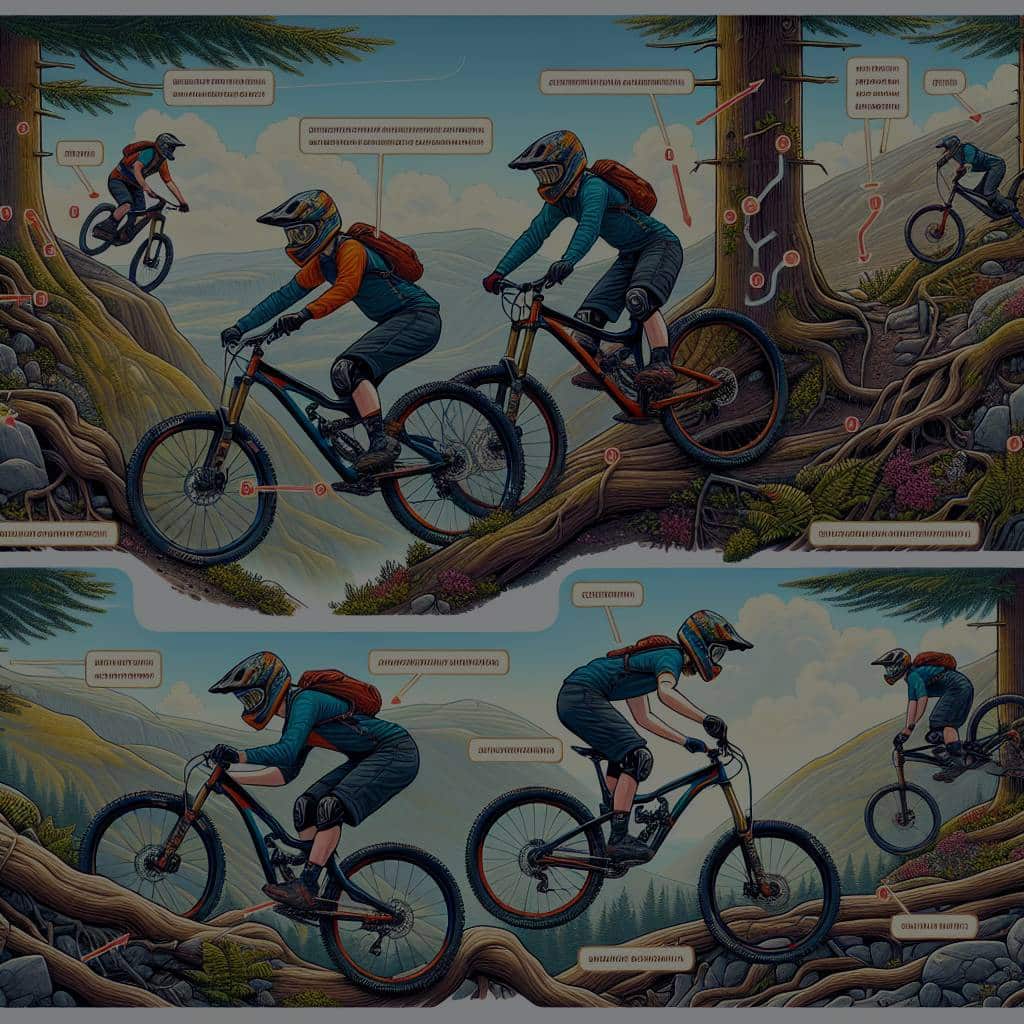How Can Mountain Bikers Train to Improve Technical Downhill Skills?

Mastering the art of mountain biking, or MTB, requires a dedication to fitness, training, and skill acquisition. It’s not merely a question of strength or speed, but a balance of these attributes with technical prowess and an innate understanding of the terrain. In this article, you’ll find valuable insights on how to enhance your MTB skills, specifically directed towards improving your technical downhill riding performance.
Correct Positioning on the Bike
In order to safely navigate downhill terrain, it’s crucial to understand and adopt the correct positioning on your bike. The two key aspects of this are the ‘attack position’ and weight distribution.
Also read : What’s the Best Approach for Building Endurance in Competitive Dance?
The attack position is a standing position that you adopt when approaching downhill or uneven terrain. It allows for maximum maneuverability and responsiveness. The process is simple. Stand up on your pedals, bend your knees and elbows, keep your body low and centered over the bike, and look ahead to anticipate the trail.
Weight distribution is another critical aspect. Always remember to shift your weight towards the back of the bike when going downhill. This balance will prevent you from going over the handlebars if you have to brake suddenly or hit a bump. However, be careful not to shift your weight too far back. It could cause loss of control of the front wheel.
Additional reading : How Can Goal-Oriented Training Be Applied to Improve Competitive Swimmers?
Practicing your positioning repeatedly will help it become second nature, allowing you to focus more on the trail rather than your body movements.
Building Strength and Power
Strength and power are essential components in an MTB rider’s toolkit. They help you maintain control over your bike and navigate through challenging terrains.
Start by focusing on core strength. A strong core will help you balance better and control your bike with more precision. Exercises such as planks, bridges, and crunches are a good start. Don’t forget to work on your back muscles as well, as these play a crucial role in maintaining a good riding position.
Next, work on your leg strength. Squats and lunges are effective exercises for building leg muscles. Strong legs help you stand up on the pedals for extended periods, especially during intense downhill rides.
Lastly, don’t overlook the importance of arm and upper body strength. Push-ups, pull-ups, and weight lifting can help build these muscles, enabling you to sustain the attack position and control the handlebars with more power.
Intensifying Your Training Regime
To improve your technical downhill skills, you need to intensify your training regime. This does not necessarily mean spending more time training, but rather increasing the intensity of your workouts.
High-Intensity Interval Training, or HIIT, is a great way to boost your fitness level. This form of training involves short bursts of intense exercise followed by recovery periods. Not only does it improve cardiovascular fitness, but it also helps you deal with the sudden bursts of effort required during a downhill ride.
Don’t forget to include bike-specific exercises in your training. For instance, performing intervals on a steep hill can be beneficial. Try doing 10-20 second sprints up the hill, followed by a slow ride back down to recover.
Mastering The Art of Speed Control
Speed control is a crucial skill when it comes to downhill biking. It’s not just about going fast, it’s about knowing when to speed up and when to slow down.
Braking is a vital part of speed control. Learning how to use both your front and back brakes effectively and in synchrony will allow you to maintain control at high speeds. It’s important to avoid slamming on your brakes, as this can cause skidding or potentially flip the bike.
Aside from braking, learning to control your speed through body movements and gear shifting is essential. Leaning into turns, for example, can help you maintain momentum without having to pedal harder. Similarly, knowing when to shift gears can help manage your speed effectively.
Utilizing Visualization Techniques
Visualization is a powerful tool that can help improve your technical downhill skills. It involves mentally rehearsing your rides before you hit the trail.
Start by watching videos of experienced riders navigating similar terrains. Notice their body position, their speed, how they approach obstacles, and where they choose to brake. Then, visualize yourself riding the same trail. Imagine how you will position yourself, control your speed, and maneuver around obstacles.
This technique can help you anticipate the trail and make swift decisions during your ride. Keep in mind that this is not a replacement for actual practice, but rather a supplementary tool. The more you visualize, the more you’ll be prepared, and eventually, those technical downhill skills will be second nature.
Prioritizing Recovery and Mindfulness
Mountain biking demands a lot from your body, making recovery vital. Rest and recovery are just as important as training and riding, if not more so. Overtraining can lead to a drop in performance, higher risk of injury, and general burnout.
During recovery, your body repairs damaged muscles and replenishes energy stores. This is when actual growth and progress occur. Therefore, factor in regular rest days in your training plan. During these days, engage in low-intensity activities such as stretching, yoga, and light cross-training.
Sleep is another crucial aspect of recovery. Aim for seven to nine hours of quality sleep each night. During sleep, the body releases growth hormones, essential for muscle repair and growth.
Mindfulness, the practice of being fully present in the moment, can also play a role in your MTB training. It can help manage your heart rate, improve focus, and reduce performance anxiety. Simple mindfulness exercises such as deep breathing and meditation can help you tune in to your body, making you more aware of your body position, power output, and how to control the bike.
Seeking Professional Guidance
While self-training and practicing can significantly improve your mountain biking skills, it may not always be enough. A qualified cycling coach can provide personalized training plans, correct your riding techniques, and provide feedback that can fast track your progress.
A coach can analyze your riding style, identify areas of improvement, and provide tips and drills to enhance your skills. They can also guide you in strength training, ensuring that you’re performing exercises correctly and safely.
Moreover, a coach can help you understand the technical aspects like gear shifting, weight distribution, and more, in a more nuanced manner. They can also provide guidance in bike maintenance, an often-overlooked aspect of mountain biking.
In conclusion, improving your technical downhill mountain biking skills is a complex process that involves mastering the correct body position, building your body strength, intensifying your training regime, mastering speed control, utilizing visualization techniques, prioritizing recovery and mindfulness, and potentially seeking professional guidance. It’s a challenging yet rewarding journey that not only improves your performance but also enhances your overall mountain biking experience. Remember, the key is consistent practice, patience, and a willingness to learn and improve. Stay safe, keep riding, and enjoy the thrill of mountain biking.
